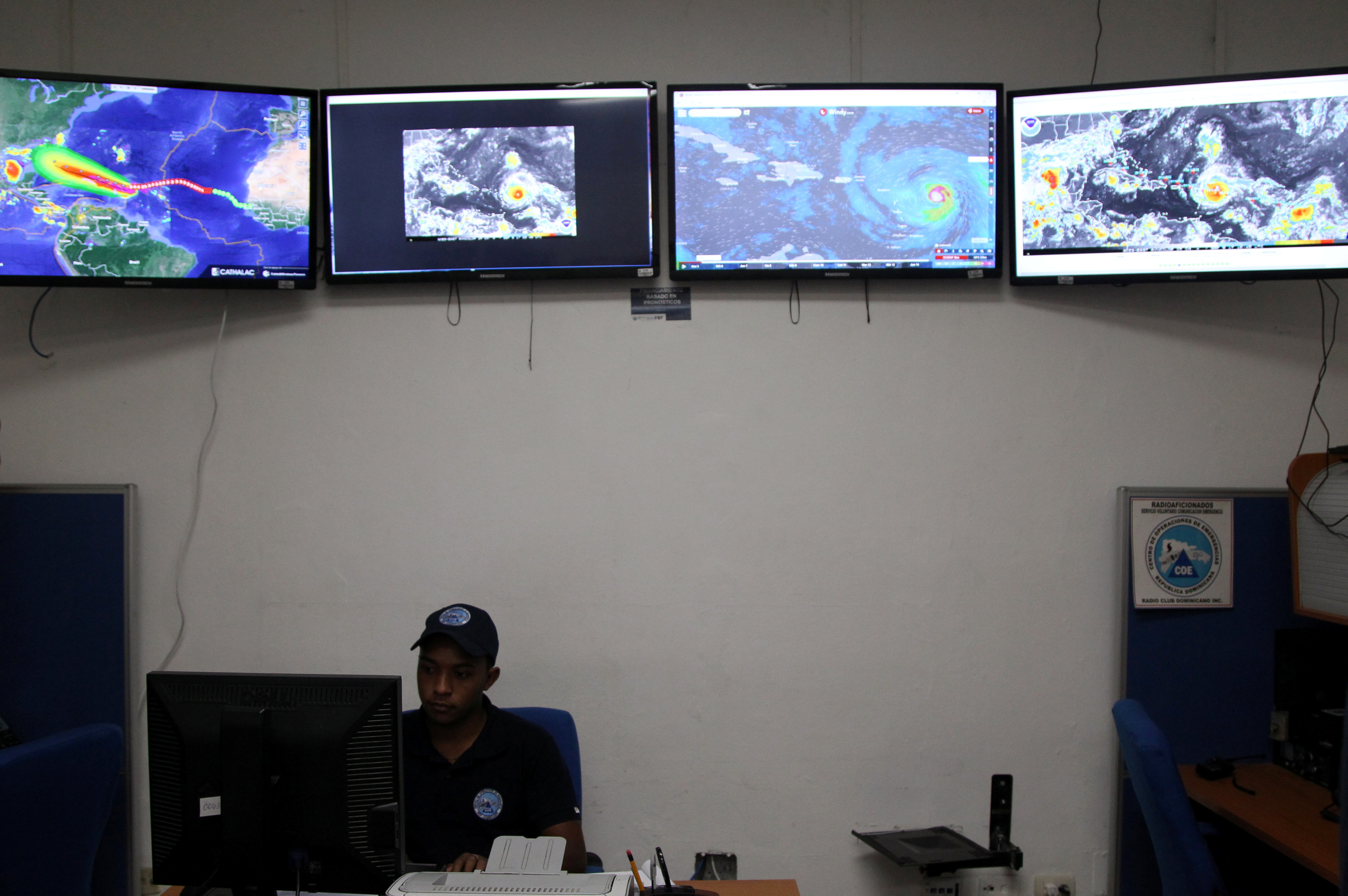
By Scott Malone
SAN JUAN, Puerto Rico (Reuters) – Monster Hurricane Irma hammered the Caribbean island of St. Martin on Wednesday as it packed a potentially catastrophic mix of pounding winds and rain and surging surf that was expected to make landfall in Florida over the weekend.
Irma could become the second powerful storm to thrash the U.S. mainland in as many weeks, but its precise trajectory remained uncertain. Hurricane Harvey killed more than 60 people and caused as much as $180 billion in damage after hitting Texas late last month.
The eye of Irma, a Category 5 storm with winds of 185 miles per hour (295 km per hour), was bearing down on the Virgin Islands after passing over the half-French, half-Dutch island of St. Martin, the National Hurricane Center (NHC) in Miami said. Category 5 is its highest category.
Its trajectory indicated Irma, which the NHC said was the strongest Atlantic storm on record, would skirt most of the Caribbean as it moves west-northwest.
Karel van Oosterom, the Netherlands ambassador to the United Nations, said Irma hit the Dutch islands of Saba and Sint Eustasius before overrunning St. Martin.
“First information indicates that a lot of damage has been done, but communication is still extremely difficult,” he said at a U.N. meeting.
Irma began lashing Puerto Rico with rain at mid-morning. Governor Ricardo Rossello told residents to stay inside as the storm bore down on the island. “There is no reason to be in the street,” Rossello told a midday press conference.
Many businesses in San Juan, the island’s capital, were closed and many buildings were covered with storm shutters. Occasional shoppers were out making final purchases of water, ice and food to prepare for what could be several days without power.

A shopper in Sedano’s Supermarket looks at nearly empty water shelves in the Little Havana neighborhood in Miami, Florida as residents are prepare for the approach of Hurricane Irma. REUTERS/Joe Skipper
ROOFS BLOWN OFF
After Irma battered the island nation of Antigua and Barbuda, emergency officials reported three injuries and minimal damage, with some roofs blown off. Prime Minister Gaston Browne said flights would resume from the airport Wednesday afternoon.
Much of the Leeward Islands were under a hurricane watch, as well as the U.S. and British Virgin Islands, Haiti, the Dominican Republic, the Turks and Caicos Islands and the southeastern Bahamas, the NHC said.
In Paris, the French government said it had delivered water and food to two overseas territories, St. Martin and St. Barthelemy, and that emergency response teams would be sent once the storm had passed.
Power was knocked out on both islands, according to prefecture officials on Guadeloupe. At least four buildings were damaged and low-lying regions had been flooded, French Interior Minister Gerard Collomb said.
The U.N. World Food Program prepared to provide emergency aid to Haiti if it was hit by Irma. The country was ravaged by a 2010 earthquake and Hurricane Matthew last year.
U.S. President Donald Trump said he and aides were monitoring Irma’s progress. “But it looks like it could be something that will be not good. Believe me, not good,” he told reporters in the White House.
Florida Governor Rick Scott said Irma could be more devastating than Hurricane Andrew, which struck the state in 1992, especially with a storm surge that could reach 10 feet (3 m).
Residents of the Florida Keys, a resort archipelago at the state’s southern tip, were ordered to leave by Wednesday evening. Residents of low-lying areas in densely populated Miami-Dade County were urged to move to higher ground.
“We can expect additional evacuations as this storm continues to come near our state,” Scott said at a news conference in the Keys.
He said 7,000 National Guard troops would report for duty on Friday, ahead of the storm’s expected arrival.
Irma ranked as one of the five most powerful Atlantic hurricanes in the last 80 years and the strongest Atlantic storm recorded by the NHC outside the Caribbean Sea and Gulf of Mexico.
Trump approved emergency declarations for Florida, Puerto Rico and the U.S. Virgin Islands, mobilizing federal disaster relief efforts.
With Irma’s looming arrival, the Miami Dolphins’ home game against the Tampa Bay Buccaneers, scheduled for Sunday, was postponed until Nov. 19, the National Football League said.

A member of the Emergency Operations Committee (COE) monitors the trajectory of Hurricane Irma in Santo Domingo, Dominican Republic September 5, 2017. REUTERS/Ricardo Rojas
(Additional reporting by Bernie Woodall in Ft. Lauderdale, Fla., Michelle Nichols at the United Nations, Brendan O’Brien in Milwaukee, Jeff Mason, Ian Simpson and Susan Heavey in Washington, Tom Miles in Geneva and Richard Lough in Paris; Writing by Ian Simpson; Editing by Catherine Evans and Jeffrey Benkoe)








